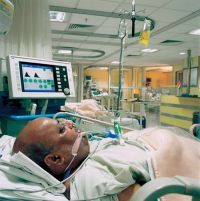Article
Copper Surfaces Reduce ICU Infections by 60 Percent
Author(s):
Researchers at the Medical University of South Carolina (MUSC) have published a study in Infection Control and Hospital Epidemiology's May 2013 issue showing that copper surfaces in intensive care unit (ICU) rooms reduced health-acquired infections (HAIs) by 60 percent.

Researchers at the Medical University of South Carolina (MUSC) have published a study in Infection Control and Hospital Epidemiology's May 2013 issue showing that copper surfaces in intensive care unit (ICU) rooms reduced health-acquired infections (HAIs) by 60 percent. The proportion of patients who developed HAIs and/or colonization with methicillin-resistant Staphylococcus aureus (MRSA) and vancomycin-resistant Enterococcus (VRE) was significantly lower among patients in rooms with copper surfaces. These patients also had approximately half the number of infections compared with patients in traditional ICU rooms.
The researchers, led by Cassandra D. Salgado, MD, Associate Professor of Infectious Diseases at MUSC, had anticipated a 10% reduction in infections, and were surprised by their findings. “Our study found that placement of items with copper surfaces into ICU rooms as an additional measure to routine infection control practices could reduce the risk of hospital-acquired infections as well as colonization with multidrug-resistant microbes,” she said.
Copper is known to be able to kill environmental microbes. According to study coauthor Michael Schmidt, PhD, copper works so well in fighting HIAs because of quantum mechanics. “For the same reason we use copper wire to transmit electricity is the same reason copper kills bacteria. It literally steals the electricity inside the microbes, rendering them inactive. They literally die because they run out of juice.”
In the study, which ran at 3 medical centers including MUSC, Memorial Sloan-Kettering Cancer Center, and the Ralph H. Johnson Veterans Affairs Medical Center, patients were randomly assigned to receive care in a traditional room or a room where bed rails, tables, IV poles, and nurses’ call buttons had copper surfaces. Both traditional and rooms with copper-surfaces were at the 3 institutions were cleaned using the same practices.
The MUSC researchers said they will be studying implementation of more copper beds into the hospital and will begin testing other items, such as copper stethoscopes.





